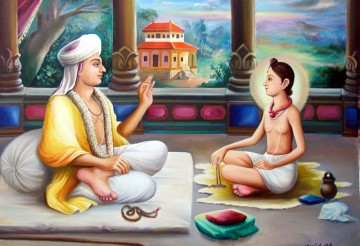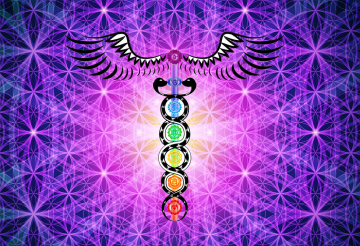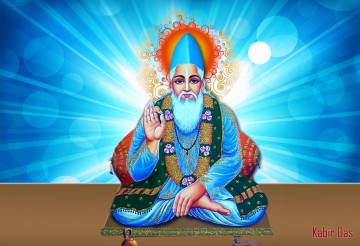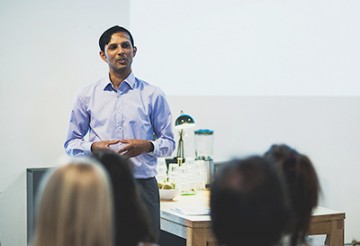The Significance of Ramananda in the Evolution of Bhakti Movement
Ramananda occupies a pivotal position in the Bhakti Movement of Medieval India. He was a Vaishnava saint. He was mainly instrumental in ushering in the new epoch of Medieval Mysticism. He is considered to be the reviver of Ramanandi sect. The religious reforms were brought back to North India by Ramananda. Tarachand declares that, “he was the bridge between the Bhakti Movement of South and North”. He would also indicate the working of Bhakti ideas in the North. He further lays stress on the concept of equality borrowed from Islam which made Ramananda embrace disciples from all walks of life. He was known for communicating in vernacular Hindi. He accepted his disciples from all castes.
Remove Rigidity of Caste system
Sri Vaishnavas admitted only Brahmins as teachers and only people of high caste as lay members. But Ramananda never stood for castes. Ramananda says that one who has practiced the doctrine of human equality and brotherhood is admitable to God:
Let no one ask a man ‘s caste or sect, whosoever worships God is God’s own.
The substance of his teaching is that: (1) perfect Bhakti and pure love is dear to God and (2) all devotees of God are brothers. As he admitted pupils of every caste, it is in fact, asserted in the Bhakt-Mala that the distinction of caste is immaterial. There is no difference between Bhagwan and bhakta, Bhagwan takes incarnation in inferior form such as a Fish (Matsya), a Boar (Varah), a Tortoise (Kurma) etc.; so therefore the bhakta may be born as a low caste. Ramanuja says that eternal joy is reserved only for the three upper class people and did not give the right to the Sudra to study of Vedas, which is the important source to gain knowledge. Ramananda on the contrary removed this prohibition and opened the gate of heaven for everyone without any objection of caste, creed and colour.
There was hardly a pronounced difference between Ramanuja and Ramananda regarding purely theological tents. The other essential difference between both the two is on the question of caste rules. As in the early period the former scholar despite his good intention to enlarge the religion as far as possible, followed the caste rules strictly, and as a result they did not give permission to the lower caste people to enter in his circle, but later on, when Ramananda perceived that there is only One God who is the origin of all, all the distinctions of caste and creed vanished for him, and he saw humanity as one large family, and all men as brothers. One man is higher than another, not through birth, but only through his love and sympathy. Ramananda preached to all without any reserve, and his fundamental teaching was the gospel of love and devotion.
Philosophy of Ramananda
Concept of Brahman (Supreme)
Ramananda believed that Ram is the Supreme Brahman; He is omnipresent, preserver of the universe. He is worshiped by Lord Shiva. Yogis get surrender in His lotus feet and worshipped Him.
Concept of Jiva (Soul)
Ramananda’s view is similar to that of Ramanuja on the existence of jiva as it is dependent on Brahman. He is guided and enlightened by Him. The dependence of jiva is the bliss of Supreme power as reflected in jiva under the virtual shadow of His mastership. Ram is the only means to achieve salvation. His eternalness and omnipresence help jiva to move forward towards the salvation. It can be attained by the spiritual concentration through the only bliss of Ram. So, one should follow the Prapatti-Marga (surrender). Ramananda divided jiva into two categories one is baddhaya jiva (bounded soul) and other is mukta jiva (free soul).
Concept of Maya (Illusion)
In Sankhya it is believed that Maya is the cause of prakarti (world). Prakriti is the combination of three gunas i.e. sat, raj and tamas, and by this it creates the world. It is also known as the illusion. But Ramananda never called Prakriti as Maya. Nevertheless in Sankhaya. Prakriti and Purusha are the two separate entities and are independent from each other, but Ramananda says that they are subject to Brahman. In this way he follows the doctrine of Ramanuja.
Concept of Moksha (Salvation)
Ramananda says that the abode (divya-lokaj) of Lord Ram is known as Saket-dham, which is descent in this world decorated with lots of jewels. There is a throne from which thousands of sun rays have emerged and Lord Ram is seated on that throne when a devotee gets this stage he never came back into this world, the cycle of birth and death were removed forever.
In short, Ramananda founded a school which renounced the rigidity of Hindu ritual. Though he was in the favour of devotional knowledge to all but he did not completely neglect the past traditions. Like the other Acharyas of South, he enjoined strict segregation and perfect privacy in matter of food. His views and concept of Bhakti were the essentially part of the Vaishnava Bhakti. His teachings and disciples created two distinct schools of Bhakti among the Hindus i.e. Nirguna Bhakti School (represented by Kabirdas) and Saguna Bhakti School (especially represented by Tulsidas).
Source: Evolution of bhakti movement in Northern India during 15th and 16th century, PhD thesis Priyanka Srivastava









